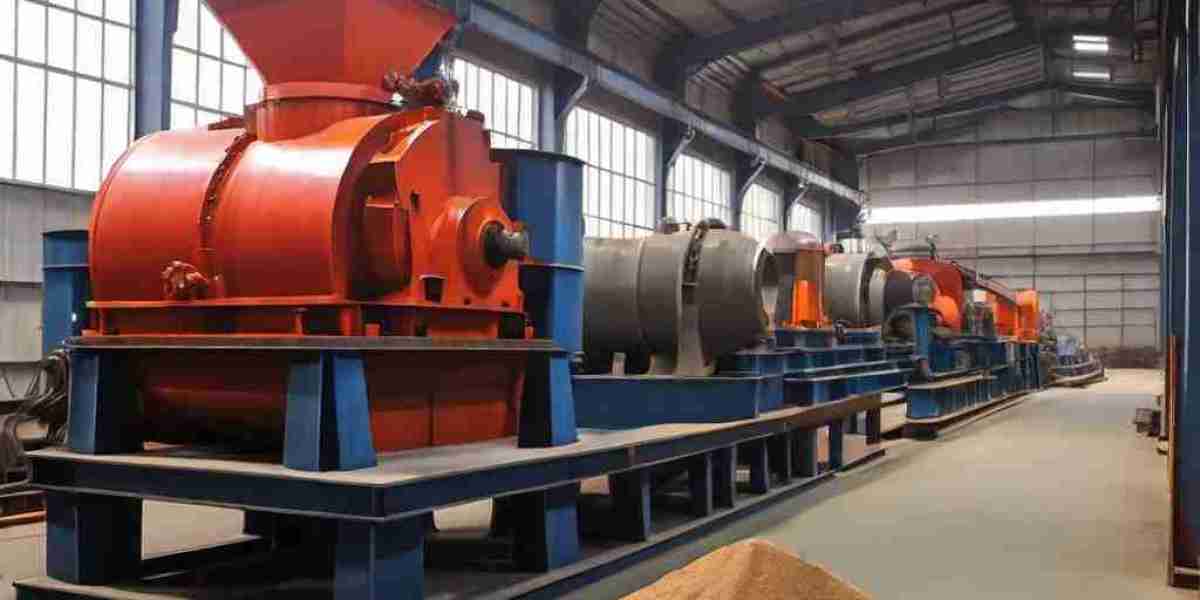Restaurant kitchen equipment is fundamental to the smooth operation of any culinary establishment. The quality and suitability of the tools and appliances utilised can significantly influence efficiency, food quality, and safety. Essential categories include cooking appliances, refrigeration units, and food preparation tools. The right equipment ensures dish consistency, enhances staff productivity, and upholds hygiene standards. Investing in high-quality kitchen equipment is paramount for any restaurant aiming to provide excellent service and maintain a competitive edge. Careful selection tailored to the restaurant's specific needs can lead to better performance and customer satisfaction.
Cooking Appliances
Cooking appliances form the backbone of a restaurant kitchen, enabling chefs to create various dishes with precision and speed. Ovens, stoves, and grills are among the essential pieces of equipment. Conventional ovens are ideal for baking, while convection ovens offer faster cooking times and more even heating.
Combi ovens combine steaming and baking, providing versatility for different cooking methods. Stoves come in multiple configurations, including gas, electric, and induction, each with unique advantages.
Grills are indispensable for searing meats and vegetables, adding flavour and texture. Depending on the cuisine, specialised equipment such as wok ranges or pizza ovens may be necessary. The right cooking appliances enhance food quality and improve kitchen efficiency, allowing chefs to focus on creating exceptional dishes.
Refrigeration Units
Refrigeration units are critical in preserving food safety and quality in restaurant kitchens. They ensure that ingredients remain fresh, maintaining the standards for serving high-quality dishes.
Types of Refrigeration Units
Different refrigeration units serve varied needs in restaurant kitchens. Walk-in units offer extensive storage for bulk supplies, while reach-in and under-counter models provide quick and easy access to frequently used items.
Energy Efficiency
Energy efficiency is a key consideration when choosing refrigeration units, as it directly impacts operational expenses. Energy-efficient models help reduce electricity costs while maintaining peak performance.
Storage Capacity
Adequate storage capacity is essential for smooth operations, especially during peak service times. Properly selected units minimize food waste by keeping ingredients organized and extending their shelf life.
Accessibility and Convenience
The type of unit influences convenience. Walk-in refrigerators accommodate large volumes of supplies, while reach-in and under-counter models ensure that chefs can quickly retrieve ingredients during preparation.
Hygiene and Kitchen Performance
The correct refrigeration units contribute to maintaining stringent hygiene standards by keeping food stored at appropriate temperatures. A well-equipped kitchen with reliable refrigeration systems enhances overall performance and efficiency.
Food Preparation Equipment
Food preparation equipment is integral to the smooth functioning of a restaurant kitchen. Tools such as mixers, slicers, peelers, and food processors expedite the preparation process and ensure ingredient size and quality uniformity.
A commercial mixer can manage substantial batches of dough or batter, whereas slicers guarantee consistent cuts of meats or vegetables. Food processors are invaluable for tasks like chopping, blending, and pureeing. Peelers streamline removing skins from fruits and vegetables, significantly reducing prep time.
Quality food preparation equipment enhances efficiency and supports the creation of high-quality dishes. Investing in robust and reliable tools tailored to the kitchen's specific needs is a strategic move for any culinary establishment aiming to maintain high service and productivity standards.
Safety and Sanitation Equipment
Hygiene and safety are paramount in any restaurant kitchen. Essential equipment includes commercial dishwashers and sanitising stations to maintain cleanliness. Personal protective gear, such as gloves and aprons, ensures staff safety while handling food and hot equipment.
Regular cleaning and maintenance routines help prevent contamination, safeguarding staff and customers. Additional items like handwashing stations and waste disposal units contribute to a hygienic environment.
Implementing stringent safety and sanitation protocols adheres to health regulations and fosters a safe working atmosphere. Properly maintained safety and sanitation equipment are crucial to the establishment's functionality and reputation.
Storage Solutions
Practical storage solutions are vital for maintaining an organised and efficient kitchen.
· Proper shelving and storage systems optimise space, keeping the kitchen clutter-free.
· Adjustable shelving units and mobile storage carts offer flexibility and easy access to ingredients and tools.
· Utilising vertical space and organising items by frequency of use can significantly enhance workflow and efficiency.
· For dry goods, airtight containers prevent contamination and spoilage.
· Labelled bins and colour-coded systems help quickly locate ingredients, saving time during busy service periods.
· Storage racks designed for pots, pans, and utensils ensure that essential items are readily available when needed.
· In addition, refrigerated storage solutions should be carefully organised to separate raw and cooked items, adhering to food safety standards.
· Efficient storage streamlines kitchen operations and supports a clean and safe working environment.
Baking Essentials
Establishments that focus on baked goods must have the right baking equipment. Key items include commercial-grade mixers capable of handling large batches, cabinets to ensure dough rises correctly, and fan ovens designed to bake evenly.
High-quality bakeware, such as non-stick trays and silicone moulds, can significantly affect the final product's quality. Precision tools like digital scales and thermometers are also essential for recipe consistency.
Additionally, cooling racks and pastry brushes contribute to baking, ensuring that each item meets the highest standards. Investing in these baking essentials facilitates efficiency and helps produce high-quality baked goods consistently.
Maintenance and Care of Equipment
Routine maintenance is essential for ensuring Restaurant kitchen equipment longevity and peak performance. Regular servicing minimizes the chances of unexpected breakdowns, helping businesses save on costly repairs.
Preventive Measures
Conducting periodic checks on equipment allows for early identification of potential issues. Preventive actions, such as replacing worn-out parts and lubricating moving components, prolong the lifespan of machinery.
Best Cleaning Practices
Implementing effective cleaning routines, such as descaling dishwashers and sharpening blades, ensures that equipment remains in optimal condition. Proper cleaning also improves hygiene and performance.
Adhering to Manufacturer Guidelines
Following manufacturer-recommended maintenance procedures is vital for maintaining equipment efficiency. These guidelines provide detailed instructions on care and servicing to maximize performance.
Staff Training
Training staff in proper equipment usage and maintenance routines significantly enhances reliability. Well-trained employees contribute to smoother operations and reduce the likelihood of improper handling.
Maintenance Logs
Keeping a detailed maintenance log helps track servicing schedules and identify recurring issues. These records provide valuable insights for proactive management and ensure consistent functionality.
Emerging Trends in Kitchen Equipment
The restaurant industry continually adapts to new technologies, and kitchen equipment is no exception. Smart kitchen technology, such as programmable ovens and internet-connected refrigerators, is revolutionising kitchen operations by offering greater control and efficiency.
Energy-efficient appliances are becoming increasingly popular, addressing environmental concerns and operational costs. Induction cooking surfaces are gaining traction for their speed and energy savings.
The focus on sustainability also influences equipment choices, with a growing preference for machines that minimise waste and conserve resources. Embracing these emerging trends can significantly enhance the functionality and eco-friendliness of a restaurant kitchen.
Factors to Consider When Purchasing
When selecting restaurant kitchen equipment, assessing the balance between budget and quality is essential. This ensures that investments are made in durable and efficient appliances. Supplier reliability and comprehensive warranty options are critical to minimising disruptions in case of equipment failure.
Additionally, it is crucial to consider the specific needs of the restaurant's menu, as tailored equipment can enhance performance and streamline operations. Energy efficiency should also be a key consideration, as it can significantly impact long-term operational costs.
Well-equipped and Efficient Kitchen
Manufacturers' reputations and reviews are critical in assessing the reliability and performance of their products, particularly in the food service industry, where equipment quality directly impacts operations.
Positive reviews and strong reputations often indicate consistency, durability, and customer satisfaction, making them valuable indicators for potential buyers. Furthermore, evaluating the availability of spare parts and the ease of maintenance is essential for ensuring the long-term functionality of equipment.
Accessible spare parts reduce downtime in case of malfunctions, while user-friendly maintenance processes help kitchen staff keep the equipment in optimal condition without unnecessary delays.
Staff Training on Equipment Use
Adequate equipment use training is imperative for maintaining a productive and safe kitchen environment. Staff should be well-versed in operating and maintaining all appliances, ensuring they can handle each piece of equipment effectively. Comprehensive training sessions covering operational guidelines, safety protocols, and troubleshooting techniques are essential.
By understanding the proper use and care of equipment, staff can minimise wear and tear, thus extending the lifespan of appliances. Familiarity with the functionality of each tool also reduces the risk of accidents, contributing to a safer workplace. Providing ongoing education on new equipment and updated protocols will help staff stay adept and efficient.
Tailored Equipment
Various considerations are crucial when investing in restaurant kitchen equipment. The balance between budget and quality is essential to ensure durable and efficient appliances. Supplier reliability and warranty options should be evaluated to minimise disruptions from equipment failure.
Tailored equipment can enhance performance and streamline operations based on the restaurant's menu. Energy efficiency should also be a key consideration, as it impacts long-term operational costs. Manufacturers' reputations and reviews offer valuable insights into the reliability and performance of their products.
The availability of spare parts and ease of maintenance are also important factors in ensuring ongoing functionality and reducing downtime. Making informed decisions based on these criteria will contribute to an efficient kitchen.
Conclusion
Investing in appropriate Restaurant kitchen equipment is pivotal for operational efficiency and overall success. Quality tools and appliances streamline cooking processes, uphold food safety, and enhance staff productivity. Key considerations include balancing budget with quality, ensuring supplier reliability, and selecting equipment that meets the restaurant's needs. Proper maintenance and staff training further optimise equipment performance and longevity. An informed approach to selecting and maintaining kitchen equipment can significantly contribute to the restaurant's ability to deliver exceptional service and consistently meet customer expectations.
FAQs
Why is investing in high-quality kitchen equipment necessary for a restaurant's efficiency?
Quality kitchen equipment ensures reliability, durability, and consistent performance, which minimizes breakdowns and downtime. It is designed to handle the demands of a busy kitchen, allowing chefs and staff to work seamlessly. This results in faster preparation times, improved workflow, and better customer service.
How does the right Restaurant kitchen equipment enhance food preparation processes?
Modern, high-quality Restaurant kitchen equipment often has advanced features like precision controls, energy efficiency, and user-friendly designs. These features help streamline tasks such as chopping, cooking, and cleaning, saving time and effort while maintaining the food's quality.
Does investing in quality equipment lead to long-term cost savings?
Absolutely! While high-quality equipment may require a more significant upfront investment, it often proves cost-effective in the long run. Its durability reduces repair and replacement costs, while energy-efficient models lower utility bills. Additionally, improved efficiency can increase a restaurant's capacity to serve more customers, boosting revenue.
Related Business Listings |





